Archive for the ‘Bakersfield hair transplant’ Category
Monday, June 4th, 2012
Hair Transplant Gigosessions: A Patient Benefit
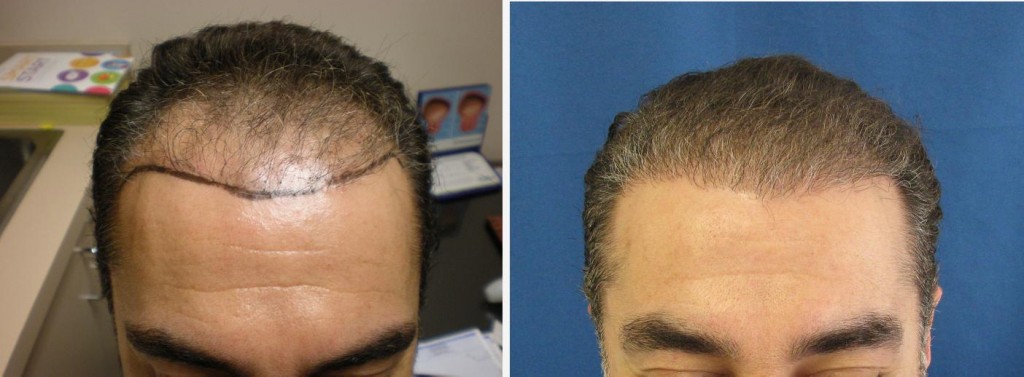
Gigosessions and all hair transplant surgeries are optimally aided by the use of the Laxometer, invented by Parsa Mohebi, MD medical director at US Hair Restoration centers. Laxometer is an intra-operative tool that is becoming an industry standard globally. Utilizing the metric system for most accurately determining scalp laxity, Laxometer helps the surgeon to reduce the risk of closure tension on donor wound edges. The result leads to minimize the tension of the donor wound edges and increases the safety of the strip follicular unit hair transplantation. The Laxometer’s preciseness in measurements allows hair restoration surgeons to best formulate the safe size of donor strips. Donor strip size ultimately determines the number of possible grafts available for hair transplantation.
These exciting developments for hair loss sufferers have made hair restoration a natural, permanent and proven solution.
Tags: advance hair transplant, hair loss, laxometer, scalp laxity
Posted in Bakersfield hair transplant, hair transplant, Los Angeles Hair Transplant, Parsa Mohebi MD, US Hair Restoration | 1 Comment »
Thursday, November 18th, 2010
Hello blog readers,
I have some great news about US Hair Restoration’s current hair transplant costs!!
As the result of a recent meeting between my staff members and I, there will now be a Holiday Special beginning on December 1, 2010 at US Hair Restoration. This special will be offered for an extremely limited time and is one of the lowest prices for quality hair restoration yet.
We realize that holidays are quite busy for some people and that certain patients will need to book their procedure on a specific date in order to keep their schedules in tact. To accommodate this need of many of our patients, a rare discount of 40% off regular hair transplant costs will be offered to all of our valued clientele who have flexible schedules and are willing to book their procedures within 7-10 days of the procedure itself. By offering this discount to our patients with flexible schedules, we hope to accommodate the needs of all of our valued patients while not sacrificing the high quality that US hair Restoration stands by and is known for worldwide.
With this limited time discount, hair transplant costs at US Hair Restoration will be:
Offer only valid until January 31, 2011. Call 888-302-8747 to schedule your free consultation today. For additional information on the procedures we offer here at US Hair Restoration, feel free to check out our detailed webpages on Follicular Unit Transplants and Follicular Unit Extractions. We look forward to meeting you all in office soon!
Tags: cost of hair restoration, cost of hair transplant, hair restoration cost, hair transplant cost
Posted in Bakersfield hair transplant, California hair transplant, hair transplant, men hair restoration, Newport Beach hair transplant, Orange County hair transplant, San Diego hair restoration, san diego hair transplant, Uncategorized, women hair loss | No Comments »
Tuesday, January 19th, 2010
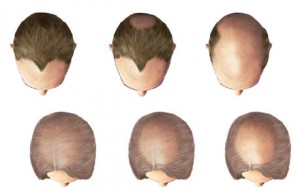
Q:
Hey Dr. Parsa Mohebi,
I’m grateful you took time out to see me on Saturday. The letter that gave a summary of what we talked about was very thorough and I just wanted to say thanks for that.
Since the last time we met, I did some of my own research and came up with a few queries:
1) When it comes to giving a name to my hair loss pattern, is Alopecia the correct way to describe it?
2) Would a Cortizone shot be an option for me?
3) Is laser therapy OK?
4) If I happen to use minoxidil, I’m wondering if it has to be 2% or would a higher percentage result in more hair growth and faster hair growth?
5) I was told to receive a complete medical evaluation, do you know of a doctor I can go to? I want someone I can trust.
Thanks again for taking the time to see me and also to accommodate my questions.
Sincerely,
Stephen
-
A:
Hello Stephen,
I’ve provided answers to your questions in chronological order.
1) When it comes to giving a name to my hair loss pattern, is Alopecia the correct way to describe it?
Alopecia, literally, would be defined as hair loss. There are many different types of alopecia or hair loss, such as male patterned alopecia or female patterned alopecia or alopecia cicatricial. I believe the pattern on your head is a male pattern since hair was lost in the frontal area as you kept hair on the donor area intact. This is the reason you may be a potential candidate for a hair transplant since your medical evaluation stated that you’re not medically treatable for hair loss.
2) Would a Cortizon shot be an option for me?
Absolutely not. But steroid shots are sometimes used for Alopecia Areata (AA), which is an autoimmune disorder. Alopecia Areata is a hair loss condition with patchy hair loss spots. Your condition is not Alopecia Areata.
3) Would you consider laser therapy?
I do not recommend laser therapy for hair loss in the form of laser comb or laser machines because of the lack of solid medical evidence that support their effectiveness at this time.
4) If I were to use Monoxidil, does it have to be 2% or a higher percentage would yield more and faster hair growth?
You can start with 2% and then you need to be re-evaluated in six to 12 months and a treatment plan might need to be adjusted at that time.
5) you recommended a complete medical evaluation, could you please recommend someone that you trust?
Any good internist or endocrinologist could follow through with the lab works that you need. Our letter includes the list of medical conditions that should be considered and lab works to rule out those women like you who have hair loss. You can share my letter with any good internist or endocrinologist and he or she should be able to follow through with your lab result and treat any treatable conditions that could possibly be found.
Have a great day,
Tags: alopecia areata, hair loss, hair loss pattern, hair loss treatment, laser therapy, laser therapy for hair loss, minoxidil
Posted in Bakersfield hair transplant, California hair transplant, hair loss medication, hair loss products, hair transplant, men hair restoration, Newport Beach hair transplant, Orange County hair transplant | No Comments »
Friday, January 15th, 2010

Not too long ago, consumer columnist David Lazarus, in a Los Angeles Times story, mentioned he had visited an open house at a hair transplant office and, to his surprise, saw that there were a lot of men who showed up. For him, it was unexpected. Lazarus said he had a conversation with the owner of the hair transplant center and learned that, in this fragile economy, a lot of men who are shopping for a hair transplant are thinking that it will better their job opportunities by having a full head of hair.
According to a CNN report, findings have shown that people who are better looking, or are slim (vs. fat), or who are of a younger age tend to have better success in the nation’s economy. These “lookers” bring in more money, have a better chance of moving up in the company, and tend to be treated more graciously. Albeit the results of this study may be a bit disturbing, it may be a somewhat accurate reflection of our society.
When we take into account these conclusions, it ought to come as no surprise that there are balding men in America who really hold fast to the idea that they can boost their chances of landing a job by sporting a full head of hair. It might just end up being a mental edge, or a self-esteem enhancer, for these adult males to give a good impression during their interviews.
All things considered, in my humble view, the crucial aspect of a job interview is a how a potential employee presents himself to his interviewer. The responses she gives, her demeanor, attitude about previous employers, and overall impression.
But, these days, some men believe it wouldn’t decrease their chances to have a full head of hair. In addition, due to the slumping economy, a hair transplant cost is at an all-time low for high-quality hair restorations. If there ever was a time to get a hair transplant for those who, under different circumstances wouldn’t get one, now is the time.
Tags: balding men, hair loss, hair loss and job prospects, hair restoration, hair transplant, job prospects, men hair loss
Posted in Bakersfield hair transplant, California hair transplant, hair transplant, men hair restoration, Newport Beach hair transplant, Orange County hair transplant | No Comments »
Tuesday, January 12th, 2010

In the past 30 years, alternate types of therapy for enhancing wound repair have been mentioned. For this entry, I wanted to talk about the cutting-edge areas of stem cell therapy and gene therapy in wound healing. When it comes to gene therapy, it was first put into practice for treating congenital defects. Now, it is a fresh alternative for affecting wound repair. To speed up the process of wound closure, genes encoded for growth factors or cytokines revealed the greatest potential.
Most gene delivery systems have roots in viral transfection, naked DNA application, high pressure injection, or liposomal vectors. Embryonic and adult stem cells posses an extended self-renewal ability with the capacity to differentiate into various tissue types. Different types of sources, such as bone marrow, peripheral blood, umbilical cord blood, adipose tissue, skin and hair follicles, have been used to separate stem cells to speed up the healing response of acute and chronic wounds.
Not too long ago, the grouping of gene and stem cell therapy has come to the forefront as a potential option to care for chronic and acute wounds.
For potential hair transplant patients, this breaking development about gene and stem cell therapy in hair restoration is fantastic news because a rapid healing from stitches in the donor area would make for a much quicker and painless procedure. There are all kinds of different types of hair loss, but, if a hair loss sufferer undergoes a hair transplant, it would be imperative that his stitches would heal quickly.
Source information was provided by the following authors: Branski LK, Gauglitz GG, Herndon DN, Jeschke MG.
Department of Surgery, The University of Texas Medical Branch and Shriners Hospitals for Children, Galveston, TX 77550, United States.
Tags: donor scar, gene therapy, hair loss, hair restoration, hair transplant, stem cell therapy, wound healing, wound treatment, wounds
Posted in Bakersfield hair transplant, California hair transplant, hair transplant, men hair restoration, Newport Beach hair transplant, Orange County hair transplant | No Comments »
Saturday, January 9th, 2010
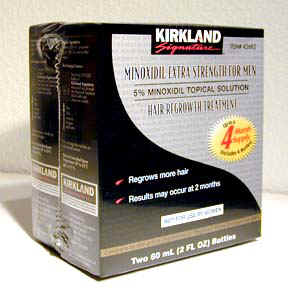
The possibility of restoring hair loss through alternative hair restoration options such as by using finasteride or Rogaine is an issue some people may be wondering about. Although hair restoration through these shortcut methods (without a hair transplant procedure) might be OK for some people, I can’t advocate it as a full-fledged solution. Advertisements may try to sway you into believing it is the answer.
Today, FDA has OK’d certain medications for hair loss prevention: finasteride and minoxidil. I must say, both are legitimate treatments, but they may have various indications for a male and female baldness pattern. But they are not, I repeat, they are not a cure-all solution for male patterned baldness, as other pharmacy industry experts may try to get you to believe.
A hair transplant ought to be thought of as a preventive agent, along with other alternativest. And also as vital part of a bigger plan on looking your best. A lot of men and women experience shock loss after a hair transplant surgery; these people are required to try preventative measures like finasteride, at least a month or two before the hair transplant.
Since hair restoration surgery started (in the 1990s) and until recently, when a hair restoration surgery was done, shock loss had been a significant issue hair transplant patients had to deal with.
But these days, a good majority of patients go on finasteride after a hair transplant surgery.
Tags: fda, finasteride, hair loss treatment, medical hair restoration, minixidil, prevention of balding, shock loss
Posted in Bakersfield hair transplant, California hair transplant, hair loss medication, hair loss products, Newport Beach hair transplant, Orange County hair transplant | No Comments »
Tuesday, December 29th, 2009

One of the main concerns for people suffering from hair loss is hair transplant cost. For a hair restoration surgery, the prices vary greatly.
The financial expense for a hair transplant is at an all-time low, especially when a person takes into consideration the high quality of transplants in this day and age. When a prospective client does research on getting a hair transplant surgery, it’s crucial to note that it’s not like purchasing a desktop computer or LCD TV, in which there are differing prices for the same exact model if a person does enough bargain hunting. Also, when it comes to a hair transplant, there can be significant discrepancies in the quality of the transplant you receive.
Over the last ten years, the hair restoration industry has seen a lot of positive changes. There were hair transplant centers which made sure to continue using the most effective and proven procedure methods introduced at meetings and continued to use the latest technologies to make surgeries more accurate. Amazingly, I’ve met a few people who have had micrograft surgery (an outdated procedure) in Beverly Hills. Also, sadly, I’ve also seen transplants done without regard to a patient’s facial aesthetics. Skimping on a few details in the process can prove to be catastrophic. Small changes here and there in the direction and distribution of transplanted hair might mean the difference between a beaming, happy client and an unsatisfied patient.
Apart from the aesthetic parts of a hair transplant, the preparation and maintenance of hair grafts are absolutely essential and are to not ever be taken for granted, which may result in poor hair growth after surgery.
Considering these facts, getting a hair transplant by a qualified hair restoration surgeon is well within the range of affordability. In the present age, the price of a medical hair restoration is at its lowest since hair transplant practices began in the early 1990s. Today, due to the current state of the economy, a lot of hair transplant centers are promoting special discounts and promotions which wouldn’t exist in a more thriving economy. At US Hair Restoration, we have a special promotion: 20% discount on standby rate; also, there’s 0% financing for two years or low interest financing for five to six years.
The low price of hair restoration is a good incentive for people to get it done with a notable monetary discount. We must warn you, though: although we offer very competitive hair transplant pricing, we must say the hair restoration industry is a buyer-beware market. US Hair Restoration offers 20% off our high-quality state-of-the-art hair transplant costs. The discount brings the rate down to $3.20 per graft compared to our original cost ($4 per graft). If a prospective client does his due research, he can find hair restoration centers which offer low-priced hair transplant surgery at $2 per graft, but this isn’t like comparing two pairs of jeans. In other words, there may be a marked difference in quality.
Remember, a hair transplant will have a long-lasting effect on your physical appearance, especially face. This is a procedure which ought to be given serious though. Even if a hair transplant center uses the most updated surgical procedures and the most prestigious personnel, they can’t dip below a certain price range, or else they won’t profit. Watch out for unbelievably low prices and massive discounts. Make sure to meet the doctor face-to-face. Several of them. Do personal research, which will enable you to ask the right questions about the techniques and types of service being provided.
When it comes to hair transplants, or other types of cosmetic surgery, I recommend you don’t do bargain shopping. It just isn’t the right way to go about it. There are a lot of hair restoration offices offering ridiculously discounted hair transplants. Let me remind you, there is one fact about hair transplants which has the potential to be wonderful or regrettable: the result.
Tags: cost of hair restoration, cost of hair transplant, hair restoration cost, hair restoration surgery cost, hair transplant cost, hair transplant discount, hair transplant expensive, hair transplant surgery cost
Posted in Bakersfield hair transplant, California hair transplant, hair transplant, men hair restoration, Newport Beach hair transplant, Orange County hair transplant | No Comments »
Tuesday, December 22nd, 2009
Q:
How long is the bleeding on my head going to last after my surgery?
A: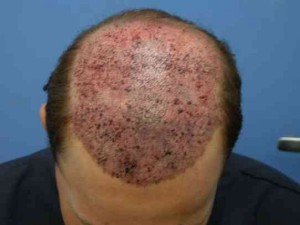
There ought to be no blood after a hair restoration procedure. The day after the transplant, there might be some bloody discharge from the donor area. But that ought to be the extent of it. Our policy is to wrap a gauze around the closed donor wound for a night. Then, the next day after your procedure, you’ll come back to our office and we’ll remove the gauze, after which we’ll wash your hair. Usually, you don’t have to wear the gauze on the donor area anymore after a hair wash, unless there are complications, which is rare.
Tags: after hair transplant, bandage after hair transplant, bleeding, Donor Wound
Posted in Bakersfield hair transplant, California hair transplant, hair transplant, men hair restoration, Newport Beach hair transplant, Orange County hair transplant | No Comments »
Saturday, December 19th, 2009
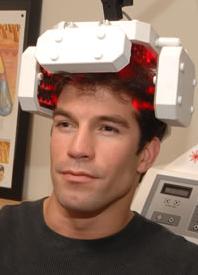
Hair transplant surgery has evolved in the last 10 years thanks to microscopic techniques and research which elucidated the mechanism of hair loss and hair restoration surgery. We now can transplant with maximum natural results. We also increased the number of grafts which could be safely removed and harvested during a single hair transplant procedure. Mega session hair transplants have been a very hot topic and an interesting idea for many people who have a large balding area that cannot simply be covered with anything less than 3000-4000 grafts.
At the offices of US Hair Restoration, we evaluate every patient for the quality of donor hair and scalp which will determine the number of grafts that could be safely harvested and transplanted in one surgery. Many people who are getting their first surgery can have over 3000 grafts. We have numbers of up to 5000 grafts, too.
Laser hair restoration is a pretty new concept and unfortunately we still do not have enough solid research published in peer reviewed journals documenting its effectiveness. There have been some results in smaller studies with some effect. However, I would rather wait on that until we have more research-proven documents in that regard.
You need to be evaluated for your donor potential and can consider surgery after that. US Hair Restoration has special hair transplant travel reimbursements for patients like you who have to fly from other cities. We also provide hotel and transportation to and from the hotel for anyone who has to commute more than 50 miles to get to our hair restoration center.
Tags: hair loss, hair restoration, hair transplant, hair transplant cost, hair transplant travel, hair transplant travel reimbursement, laser hair transplant, laser hair treatment
Posted in Bakersfield hair transplant, California hair transplant, hair transplant, men hair restoration, Newport Beach hair transplant, Orange County hair transplant | No Comments »
Wednesday, December 16th, 2009
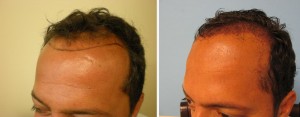 Before and After Pictures; First Day After Hair Transplant Well, on the first day we’re usually forced to kick out our patients from our office because they grow so fond of us and don’t want to leave! Well, not all the time. But our patients do like us, which is something we’re very proud of.
On a more serious note, I’ll say this: Transplanting hair is a very delicate and painstaking procedure. After a hair transplant is over, it is of utmost importance to constantly monitor and properly care for the transplanted area. US Hair Transplant’s policy is to book a patient for a hair washing the day after his or her transplant. The hair washing takes about half an hour. At our office, we use thick shampoo to clean the transplanted hair grafts. We make sure to be gentle and only spread foam and dab the transplanted area. After two minutes, we rinse off the shampoo with water.
During the first visit, another area we wash is the donor area. As a parting gift, we provide our patients with a sponge, which has a soft brush on one side. The brush is used to clean the donor area and the sponge for the transplanted area. When it comes to washing the donor area, a patient may use a bit of aggression as the wounds are stapled or sutured. The soft brush can be rubbed, ever so gently, on the back of the patient’s head to remove scabs and extra debris from the surgery.
Remember: hair washing ought to be done twice daily for first four days, after which it can be done once a day.
Because of dedication to patients, we teach them how to properly care for the transplanted area. The first four days are important, as the grafts in the transplanted area may dislodge if they aren’t washed with care. After the first four days, the patient can go back to washing his hair the way he did before surgery as the grafts, at this point, are most likely sealed and part of the person’s scalp even if the hair is moved. The remaining follicles are able to generate new hairs.
To prevent scabs, we urge our patients to wash hair using our particular technique. It’s important to note several studies have shown that scabbing may prevent transplanted hair growth. After seven days from day of surgery, there ought not to be any scabs. If scabs still appear after the seven days, it means washing wasn’t done the right way and the patient must start being a bit more aggressive in his washing technique.
After four days have passed, patients can wash their hair twice a day. In addition, patients ought to let the foam alone for ten minutes to let scabs soften. Afterward, patients can use the soft brush we provide to comb their hair in the direction of their other hairs.
Also we make sure to let our patients know to not dunk their head in water the first week after the transplant, and to try not to bend their head too frequently during the first month. Also, the first six months after surgery, we tell our patients to keep the transplanted area away from sunlight.
As time passes, the transplanted hair will grow and be able to protect the skin grafts from the sun’s ultraviolet rays.
Tags: after hair restoration surgery, after hair transplant, care after hair transplant, couple days after hair transplant, few days after hair transplant, hair transplant, hair transplants
Posted in Bakersfield hair transplant, California hair transplant, hair transplant, men hair restoration, Newport Beach hair transplant, Orange County hair transplant | No Comments »
|
|










